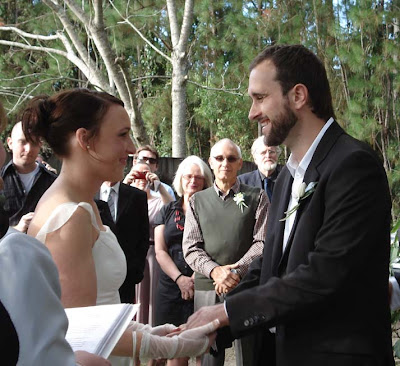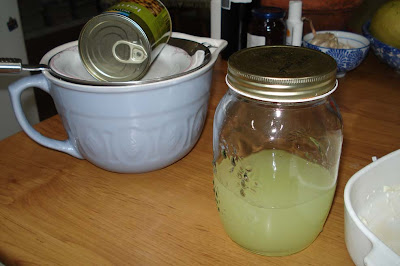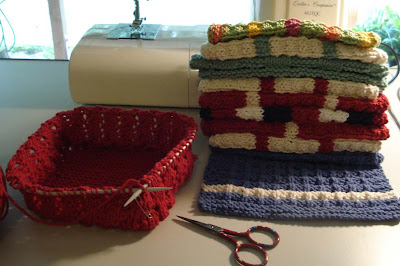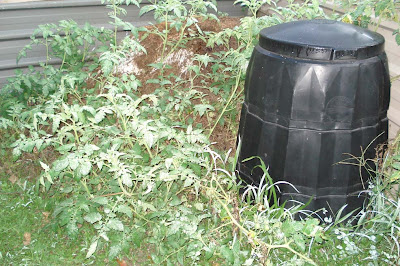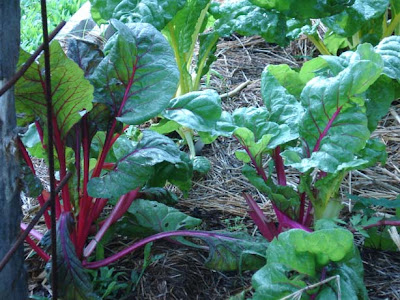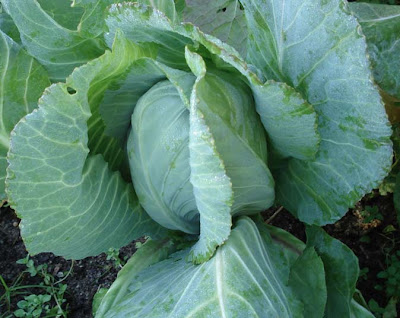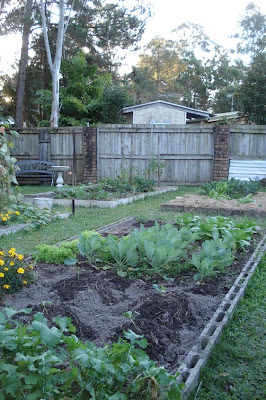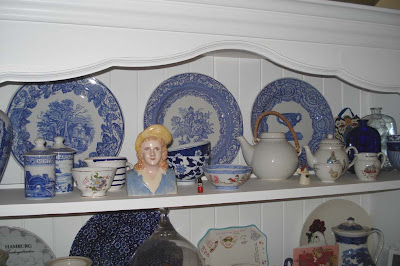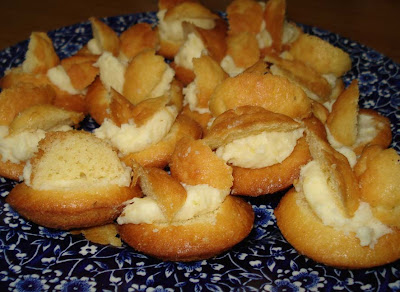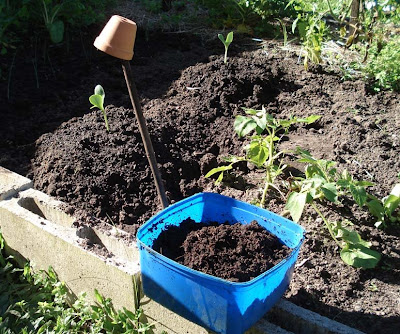I've told you well before this that I'm no great sewer. Oh, I get by, but it's not what I would call a natural talent of mine. And let me tell you I'm not being coy writing that, just truthful. There are some things I am good at, sewing is not one of them, I wish I was better at it. So it should go to show you that patch working, once you know the rules and short cuts, is quite easy. If you haven't tried it yet, and would like to make things like quilts, bags and cushion covers, find a mentor or a good book and dive right in. It is a wonderful way to recycle old fabrics and make fabulous gifts. It's so satisfying when you see the finished article that was once a jumble of assorted fabrics. The most difficult part is working out your combination of fabrics and piecing your pattern together.
I started it in late March, and got stuck after I had cut all the fabric and decided on a pattern. When I put it together, I didn't like my colour combination. So I waited until Tricia came up and she helped me look at it in different ways. She also told me I didn't have to cut all my squares, I could have done it in strips. I will do that next time.
Working with an experienced quilter made the whole process much easier. It was still time consuming and repetitive, but when we got to the end, with all the hand stitching, I really loved sitting with the quilt over my knees, stitching the edges. My DIL Cathy teaches patchwork and sewing so we took advantage of her offer to come over and use her huge table for pinning the layers together. She then kindly offered to do the quilting on her quilting machine - you can see this best on the grey border - it's the squiggly lines, called stippling.
The backing is a pure cotton sheet that I bought when I first left home in the 1960s. It's white with a tiny flower pattern and is still in good condition. On the advice of Tricia and Cathy, I made a linen hand stitched label that I attached to the back of the quilt. It states: Trip Around the World Wedding Quilt, their names, date, and where it was made by Rhonda, Tricia and Cathy. Sarndra was overwhelmed when we gave it to them and she cried. It was a very special moment.
And for those of you who wanted to see a close up photo of the cake, here it is.
I started it in late March, and got stuck after I had cut all the fabric and decided on a pattern. When I put it together, I didn't like my colour combination. So I waited until Tricia came up and she helped me look at it in different ways. She also told me I didn't have to cut all my squares, I could have done it in strips. I will do that next time.
Working with an experienced quilter made the whole process much easier. It was still time consuming and repetitive, but when we got to the end, with all the hand stitching, I really loved sitting with the quilt over my knees, stitching the edges. My DIL Cathy teaches patchwork and sewing so we took advantage of her offer to come over and use her huge table for pinning the layers together. She then kindly offered to do the quilting on her quilting machine - you can see this best on the grey border - it's the squiggly lines, called stippling.
The backing is a pure cotton sheet that I bought when I first left home in the 1960s. It's white with a tiny flower pattern and is still in good condition. On the advice of Tricia and Cathy, I made a linen hand stitched label that I attached to the back of the quilt. It states: Trip Around the World Wedding Quilt, their names, date, and where it was made by Rhonda, Tricia and Cathy. Sarndra was overwhelmed when we gave it to them and she cried. It was a very special moment.
And for those of you who wanted to see a close up photo of the cake, here it is.







